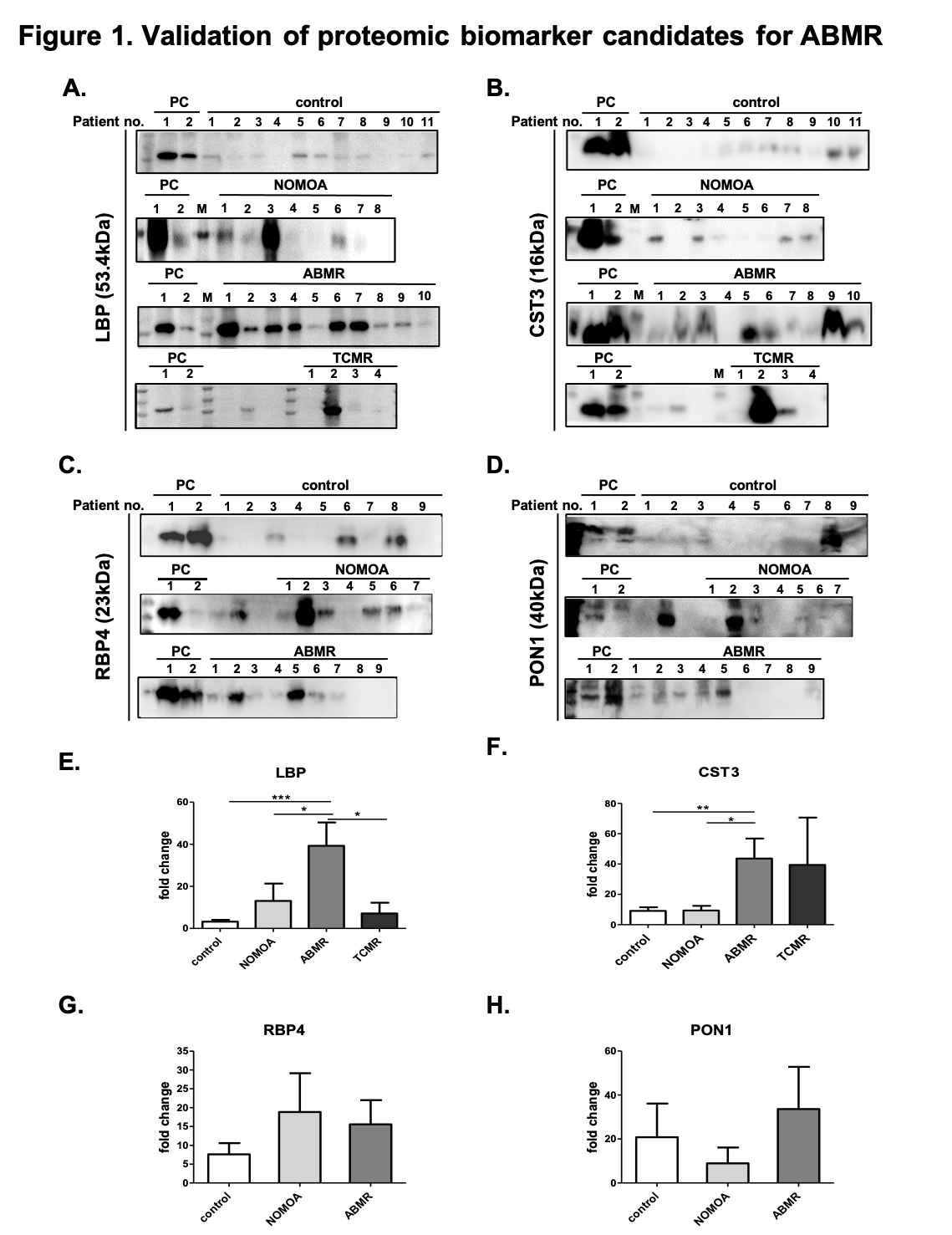Urinary Exosomal Cystatin C and Lipopolysaccharide Binding Protein as Biomarkers for Monitoring Antibody-mediated Rejection After Kidney Transplantation
Department of Surgery, Asan Medical Center, University of Ulsan College of Medicine, Seoul, Korea, Republic of
Meeting: 2021 American Transplant Congress
Abstract number: LB 28
Keywords: Kidney transplantation, Non-invasive diagnosis, Rejection
Topic: Basic Science » Biomarker Discovery and Immune Modulation
Session Information
Session Name: Biomarker Discovery and Immune Modulation
Session Type: Poster Abstract
Session Date & Time: None. Available on demand.
Location: Virtual
*Purpose: This study aims to discover and validate urinary exosomal biomarkers for antibody-mediated rejection (ABMR) after kidney transplantation.
*Methods: A total of 60 urine samples from kidney transplant recipients were collected at the time of check-up or 2 – 3 hours before the for-cause biopsy. In addition, urine specimens were collected from living kidney donors just before donor nephrectomy. They were classified into five groups; ABMR group (12 cases), T cell-mediated rejection (TCMR) group (8 cases), BK virus nephropathy (BKVN) group (5 cases), no major abnormality (NOMOA) group (11 cases) and donor (DONOR) group (24 cases). Exosome was fractionated from patient’s urine by stepwise ultra-centrifugation for proteomics analysis to find out biomarker candidates for ABMR. In the validation cohort, there were 25, 10, 19, and 25 recipients in the ABMR, TCMR, NOMOA, and control groups, respectively.
*Results: Totally, 1,820 exosomal proteins were identified in the discovery set. Among those proteins, four biomarker candidates were selected for ABMR; Cystatin-C (CST3), serum paraoxonase/arylesterase (PON1), retinol-binding protein 4 (RBP4), and lipopolysaccharide-binding protein (LBP). In the validation cohort, Western blot analysis was performed to validate urinary exosomal biomarker candidates for ABMR. Urinary exosomal LBP in the ABMR group significantly increased compared with the other groups. In addition, urinary exosomal CST3 in the ABMR group significantly increased compared with the control and NOMOA groups whereas there was no significant difference between the ABMR and TCMR groups. Immunohistochemical staining showed that relative intensities of LBP and CST3 at glomerulus were significantly higher in the ABMR group compared with the NOMOA and TCMR groups.
*Conclusions: In conclusion, urinary exosomal CST3 and LBP are potent biomarkers for ABMR after kidney transplantation.
To cite this abstract in AMA style:
Kim M, Lim S, Shin S. Urinary Exosomal Cystatin C and Lipopolysaccharide Binding Protein as Biomarkers for Monitoring Antibody-mediated Rejection After Kidney Transplantation [abstract]. Am J Transplant. 2021; 21 (suppl 3). https://atcmeetingabstracts.com/abstract/urinary-exosomal-cystatin-c-and-lipopolysaccharide-binding-protein-as-biomarkers-for-monitoring-antibody-mediated-rejection-after-kidney-transplantation/. Accessed December 18, 2025.« Back to 2021 American Transplant Congress

